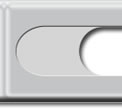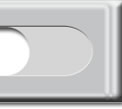Sigalon Security Systems AB
Real-Time Temperature Monitoring and Control System
Background
In the food handling and processing business, a temperature control system usually consists of one or more thermometers for visual control. Certain thermometers have the capability of storing limited temperature information. This information may then be transferred to a PC system for further study.
Most systems suffer from the fact that critical information is not immediately available to the user – the information available is mainly historical. The systems and procedures, often manual, are characterized by low operating flexibility and very limited, if any, monitoring, management, control and reporting facilities.
Opportunity
In the name of public safety, the national health authorities are placing increasingly severe requirements on companies in the food handling and processing business. Stringent rules and procedures must be adhered to, and the levels of required internal controls are increasing.
For example, recently issued regulations cover the implementation of HACCP (Hazard Analysis Critical Control Point) for the operation of all food establishments operating at the retail level throughout the European Union. The objective is to move the responsibility for food safety from enforcement authorities to food producers/providers. These regulations were due to be implemented throughout the EU by 2004. Soon, product tracing, from origin to consumption, as well as temperature tracking throughout the entire supply chain, would be fully required.
In order to meet present and future requirements, Sigalon Security Systems have recognized the drawbacks with the currently available systems and procedures, and decided to develop and market, via local agents, a new cost effective and flexible wireless system for real-time temperature monitoring and control. The system might be considered as an important part in the implementation of HACCP.
Application
The current version of the Real-Time Temperature Monitoring and Control System is addressing the requirements of producers for providers of food, to properly monitor and control the temperature in various types of storage spaces. The system will assist in minimizing spoilage, e.g. to prevent a product becoming unsafe/unusable due to exposure to temperatures that are too high for too long a period of time.
By using the technology described below, refrigerated food items and products kept in hot holding spaces, according to specific temperature requirements, can be continuously monitored and controlled.
-
For each storage space, the temperature requirements are specified according to a certain minimum and maximum range.
-
The system will regularly poll the temperature sensors in real-time, at a frequency determined by the user. The temperature polled will be compared to the acceptable range for each specific space.
-
If a polled temperature value would fall outside of the acceptable range during a certain amount of time, a signal (event) will immediately be generated by the system.
-
The signal is communicated to the person responsible in various ways, e.g. an audio or video signal using the local area network, the internet, a pager or a mobile phone.
-
The response (action) provided by the user, is recorded on the central system.
-
All events and actions are stored in a log on the central system and include a storage space identifier, the date and time of the signal and the response.
-
The information in the log, available to the authorized user, might be used for various statistical purposes, e.g. temperature variation reports, reports to health authorities as required (HACCP), event occurrences accumulation, time related events and actions, facility failure frequencies, assistance in the facility replacement process. The information is easily exported for use in common software packages.
-
In addition to the above system facilities, other monitoring and control features can be incorporated into the current system, as required. Some of these are listed below.
-
Time and temperature related functions could easily be implemented, e.g. for a unique storage space, a certain temperature level should be achieved within a specific time period.
-
Additional types of sensors might be used, e.g. weight, humidity and temperature probe.
-
Food item tracers and temperature trackers (RFID), might automatically be read and controlled at delivery and used for inventory and supplier control.
-
The system might be seen as an integral part of a more “intelligent” kitchen, in which various types of equipment (e.g. cooking, holding, blast chillers and steamers) are able to provide information about time and temperature for central monitoring and control, as per the HACCP requirements.
-
Monitoring and control of equipment energy usage is becoming increasingly important. The central computer could monitor and control energy usage of each piece of equipment, scheduling high-energy tasks for off-peak times. It could scatter peak-usage intervals — such as when refrigerator compressor runs — to avoid system overloads.
-
In addition, other rather different types of monitoring and control sensors might be added to the system, e.g.:
-
Smoke, gas and heat detectors; for direct alarm or linked to an overall security system,
-
Indoor and outdoor temperature sensors; used for automatic comfort ventilation, minimizing costs for air conditioning,
-
Rain and day/night detectors; for opening and closing of ventilators.
Technology
The Sigalon Security Systems Real-Time Temperature Monitoring and Control System, is a fully independent wireless system, based the most recent sensor, microprocessor and communication technologies.
-
Each storage space is equipped with a temperature sensor. The temperature sensor and its storage device is only 2mm² in size. It provides a temperature range of -40°C to +150°C, with a maximum deviation of less than 0.5 percent.
Each temperature sensor is connected to a lithium battery driven single chip system, with a fully integrated Radio Frequency transceiver, a microcontroller and a 4 input analog-to-digital converter.
The lithium batteries used, during normal operation, would last for about three years. A small energy generating light sensitive panel might be used as a source for battery life extension and backup.
Whenever possible, full use of energy saving and cost reducing light/solar panel technology.
Temperature information from each connected storage unit is transmitted by radio signals to a master unit for temporary storage and forwarding to the central computer system.
The system can be compared to a separate data network, where each storage space might be viewed as a terminal, each one with its unique address.
The master unit, with an information display and a small keyboard for manual input, is securely connected to a central computer system (server) via the internet.
The communication system provides full flexibility as all components, with corresponding event and action variables, maximum/minimum limit values and their interrelated priority order, are very easy to define and modify by authorized system users.
The system checks automatically, with user specified frequency, that all components in the system are operating within the specified limits and that battery charge levels are sufficient.
For each storage space, the current and recent (e.g. the last 24 hours) temperature values, in relation to the limits specified, might be displayed in numeric and simple graphical form on a local screen.
Benefits
-
Maximum use of radio based wireless communication technology.
-
Maximum use of free and environment friendly energy sources; solar and other light sensitive panels.
-
Very low energy consumption.
-
No expensive electrical installation.
-
No specialist training of personnel.
-
One supplier of system hardware and software;
- Sigalon Security Systems.
-
System installation by professionals, trained and certified by;
- Sigalon Security Systems.
-
One provider of central computer facilities and system operation;
- Sigalon Security Systems.
| |



